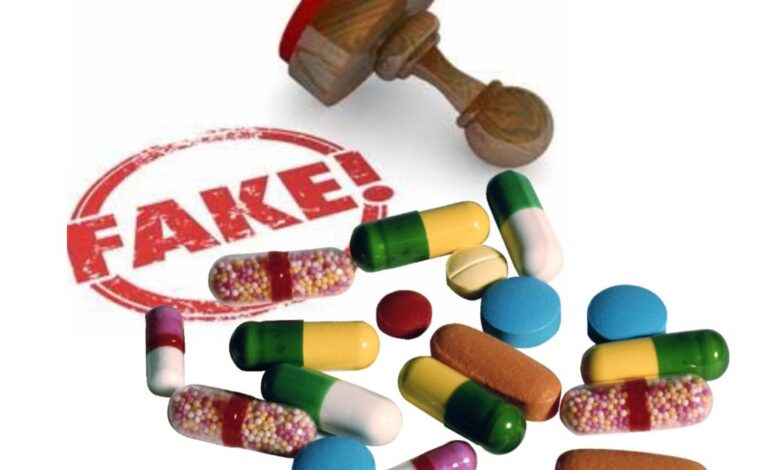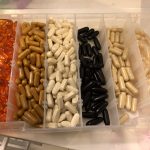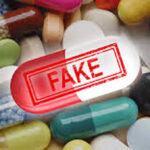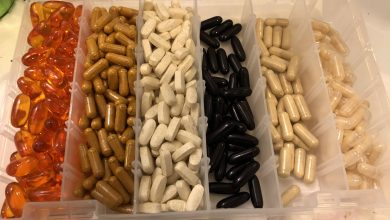How To Avoid Fake Drugs

What is a Fake Drug or Medication?
A counterfeit medication or a counterfeit drug is a medication or pharmaceutical item which is produced and sold with the intent to deceptively represent its origin, authenticity or effectiveness. A counterfeit drug may contain inappropriate quantities of active ingredients, or none, may be improperly processed within the body (e.g., absorption by the body), may contain ingredients that are not on the label (which may or may not be harmful), or may be supplied with inaccurate or fake packaging and labeling.
Counterfeiting can apply to both branded and generic products and counterfeit medicines may include products with the correct ingredients but fake packaging with the wrong ingredients, without active ingredients or with insufficient active ingredients. Counterfeit medicinal drugs include those with less or none of the stated active ingredients with added sometimes hazardous, adulterated, substituted ingredients, completely misrepresented or sold with a false brand name otherwise legitimate drugs that have passed their date of expiry are sometimes remarked with false date low quality.
Substandard and falsified medical products are by their very nature difficult to detect. They are often designed to appear identical to the genuine product and may not cause an obvious adverse reaction, however they often will fail to properly treat the disease or condition for which they were intended, and can lead to serious health consequences including death.
Identifying a substandard or falsified medical product
Some falsified medical products are almost visually identical to the genuine product and very difficult to detect. However, many can be identified by:
- examining the packaging for condition, spelling mistakes or grammatical errors;
- checking the manufacture and expiry dates and ensuring any details on the outer packaging match the dates shown on the inner packaging;
- ensuring the medicine looks correct, is not discolored, degraded or has an unusual smell;
- discussing with your pharmacist, doctor or other healthcare professional as soon as possible if you suspect the product is not working properly or you have suffered an adverse reaction; and
- reporting suspicious medical products to your National Medicines Regulatory Authority.
Substandard and falsified medical products and the Internet
Unregulated websites, social media platforms, and smartphone applications can also be direct conduits of substandard and falsified medical products. Risks to consumers are significantly increased when obtaining medical products from unlicensed and unregulated sources.
Consumers should be cautious of the following:
- spam email advertising medicines
- lack of authenticity; no verification logo or certificate
- spelling mistakes and poor grammar on the packaging
- websites that do not display a physical address or landline
- websites offering prescription only medicines without a prescription
- suspiciously low-priced products.
Checklist for medicines purchased online
- Is it exactly the medicine ordered?
- Is it the correct dosage?
- Is the packaging in good condition, clean, with a patient information leaflet and in the language in which it was advertised?
- Does the medicine look, feel and smell as it should?
- Are security seals intact with no signs of tampering?
- Does any customs declaration or postal label declare the contents as medicines?
- Does the batch number and expiry date on the primary internal packaging match the batch number and expiry date on the secondary (external) packaging?
- Have you noticed any unusual activity on your credit card since the purchase?
Who is at risk?
Falsified medical products are manufactured in many different countries and in all regions. Many countries and the media frequently report successful operations against manufacturers of substandard and falsified medical products with the use of old and new techniques including the use blockchain to detect counterfeiting. Some reports refer to large-scale manufacturing and others to small back street operations. With the availability of tableting machines, ovens, specialist equipment, ingredients and packaging materials, clandestine manufacturing facilities are quick and easy to assemble.
No countries remain untouched by this issue — from North America and Europe through to sub-Saharan Africa, South East Asia, and Latin America. What was once considered a problem limited to developing and low-income countries has now become an issue for all. The United States is currently battling an Opioid epidemic fueled by fake prescription pills laced with fentanyl which kills more than 50,000 people every year due to opioid-related overdoses.
With the exponential increase in internet connectivity those engaged in the manufacture, distribution and supply of substandard and falsified medical products have gained access to a global market place. This extends both to consumers and business forums. A culture of self-diagnosis and self-prescribing has led to the emergence of thousands of unregulated websites providing unsupervised access to substandard and falsified medical products. However, it is in low- and middle-income countries and those in areas of conflict, or civil unrest, where health systems are weak or non-existent that bear the greatest burden of substandard and falsified medical products.
Substandard and falsified medical products are most likely to reach patients in situations where there is constrained access to quality and safe medical products, poor governance and weak technical capacity. An estimated 1 in 10 medical products in low- and middle-income countries is substandard or falsified.





